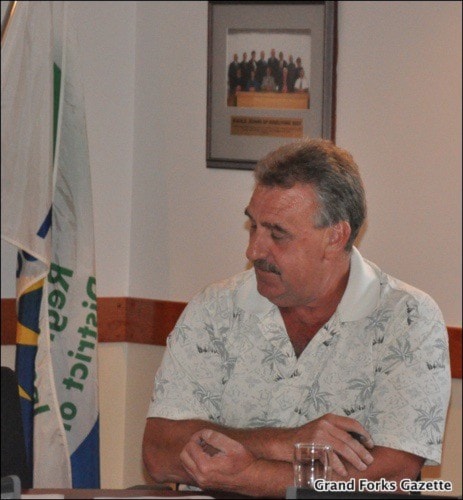The final summer study for the nephelometer monitoring of the Grand Forks air shed was presented during the Grand Forks Environment Committee meeting on Sept. 20.
Wayne Kopan, city’s environmental and building construction services manager, explained that the three-month study of the valley covered an extensive route.
“The end result at this point is that we’re finding that when we had the cold, wet weather in June, our levels remained low,” he said. “As the weather got hotter, our levels started to climb and climb extensively with the increase in traffic through July and August.”
The nephelometer traces fine particulate matter (PM2.5), which is composed of particles that are less than 2.5 micrometers, to determine possible problem areas. These particles are linked to aggravating cardiac and respiratory diseases, and a visual effect contributing to regional haze.
The study was completed with the help of summer student Jordan Andrews and multiple volunteers who drove the nephelometer around town in a hybrid vehicle.
“We’re attributing a lot of the PM2.5 to exhaust fumes and dust,” Kopan said. “The hotter it got, or the more logging truck traffic we had up the North Fork, the higher levels it went up there. It was similar to traffic levels on Central Avenue.”
Though Kopan is still going through the study, the study and the maps produced by the nephelometer reveal startling details.
“What we’re seeing is that when Interfor was doing a massive rebuild in their log yard, a lot of truck traffic and dust, and Roxul had a lot of industry stuff going on, the area around our Industrial park were not excessive – they were not higher than anywhere else in town,” said Kopan. “They are not our contributors to our air shed problem. At times they did have spikes, but they were anomalies – I believe a majority of our issues is with the truck traffic and dust.”
The anomalies are random spikes in the data with no visible sign of what may have caused the spike.
Kopan also noted that once people start to use their wood stoves again in October, there may be some spikes in the readings.
“A lot of this has to do with wood stoves and dust,” he said. “We had some hot days in August with the wildfires down south blowing the smoke in and those days were excessive. Within two days the wind came in and blew it out and we were back down again.”
At the moment, there is a group of six volunteers that will continue take this unit out around town, with some stationary check points. The Environment Committee will have the nephelometer until next June.
“We may even be going out to Greenwood and Midway to set it up there to give them an idea of how their air shed is doing,” concluded Kopan. “More volunteers are always welcome.”
Grand Forks residents are also encouraged to sit in on committee meetings. The next meeting will be on Nov. 22 at the Regional District of Kootenay Boundary’s boardroom in Grand Forks at 11 a.m.
